After 26 hours of travel from Portland through Vancouver B.C. and London, I finally arrived in Cairo late on Christmas night, excited to see Viktoria after four months apart. My time on the ground was short-lived. We woke up the next day and headed back to the airport to embark on a Nile River Cruise of the temples of Upper Egypt.
Day 1: Aswan Dam and the Temples of Philae
Our Memphis Tours group had already started the day’s activities by the time we arrived in Aswan. We missed the unfinished obelisk—a 3,500 year old partially carved tower that would have been the largest in ancient Egypt had it been completed. We soon joined the rest of our tour group and set out for Aswan Dam.
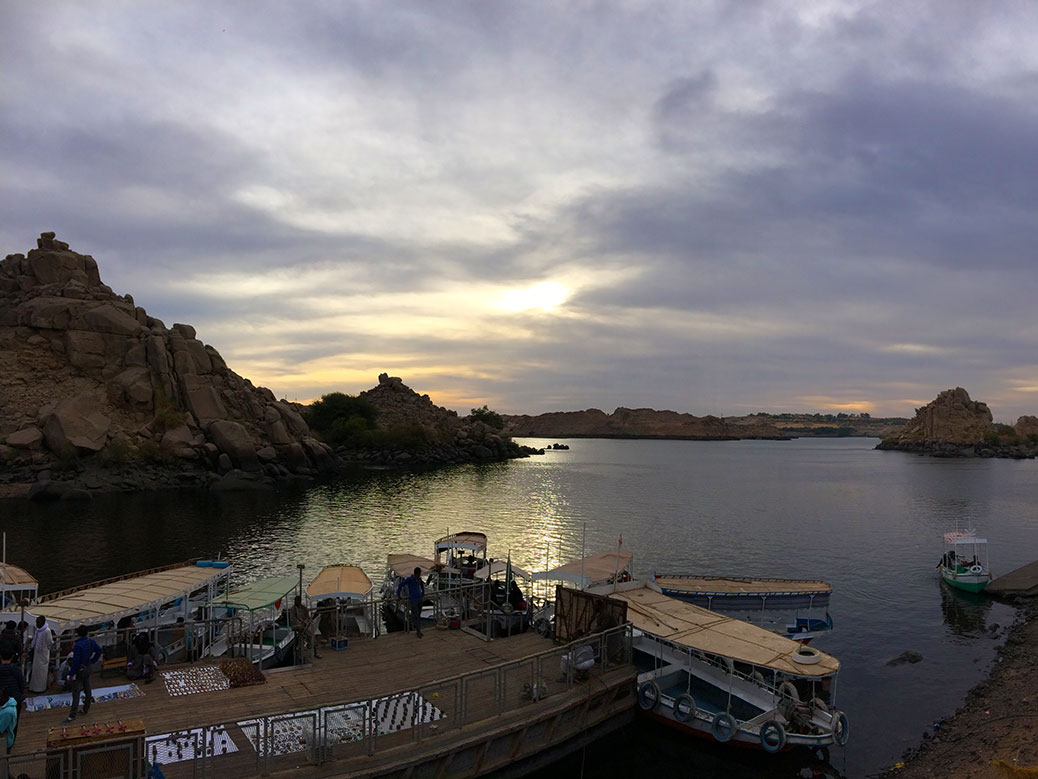
The Low Dam was completed by the British in 1902, while the High Dam was financed by the Soviet Union and completed in 1970. The latter drastically changed the landscape of Egypt, regulating the alternating cycles of drought and flooding. After the completion of the Low Dam, several archeological sites were regularly flooded and in danger of becoming lost to the Nile.
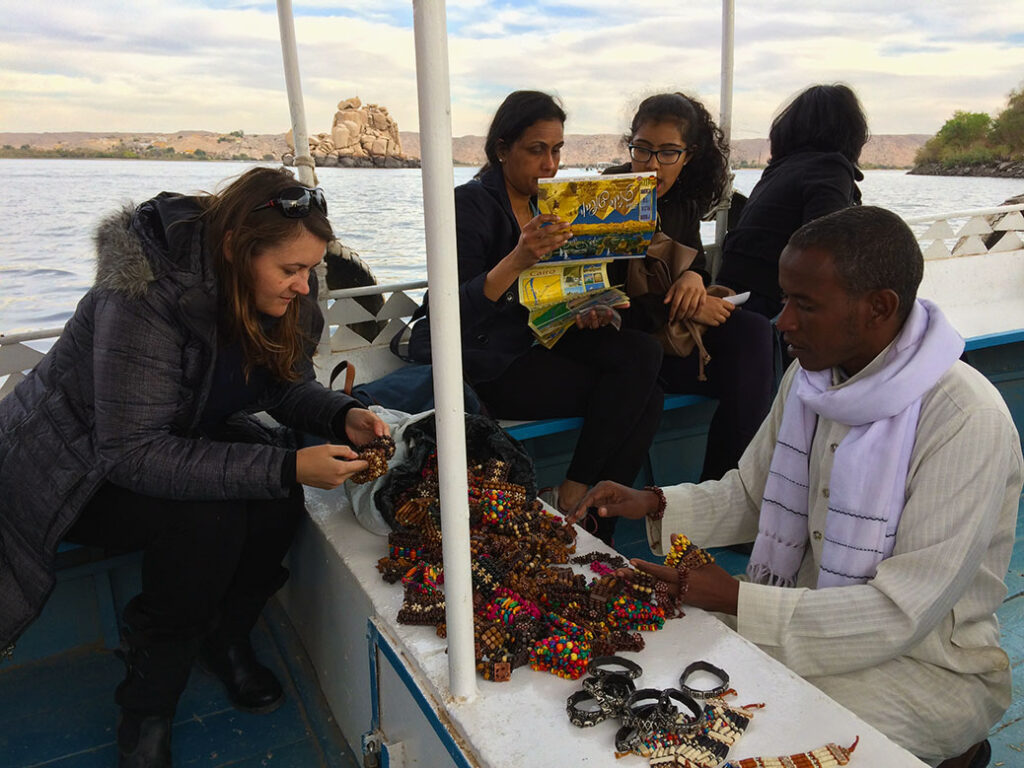
The Temples of Philae were among those sites. In the 1960s, UNESCO led a project to move the temples to higher ground on Agilkia Island. We boarded a boat to the island just before sunset. Our boat captain doubled as a souvenir vendor, spreading a bag full of bracelets on an empty bench as we drifted toward the island.
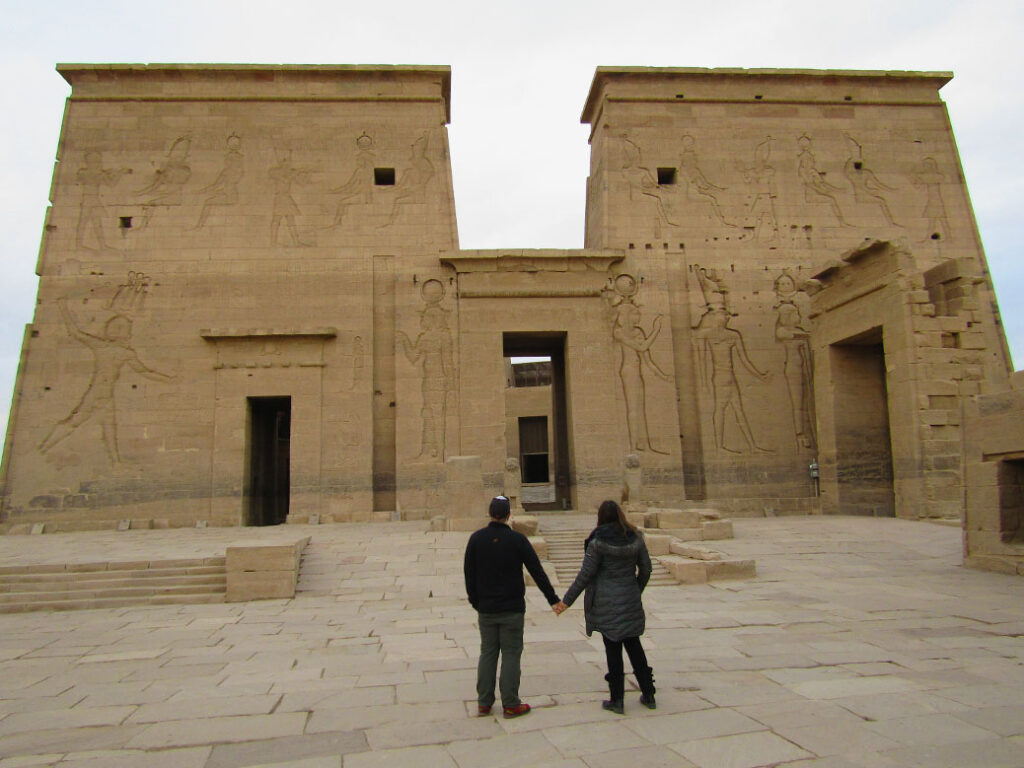
The temple complex provided an impressive start to the trip. The architecture of the temples of Upper Egypt is surprising compared to the pyramids of Lower Egypt. Towers with intimidating carvings surround massive doorways. At Philae, a relief of first-century B.C. king Ptolemy XII Auletes clubbing an enemy is prominent, our guide using various members of the group as props to demonstrate the meaning of the carvings. It would be the first of several times I would be recruited to play the role of a Syrian enemy—it’s the beard.
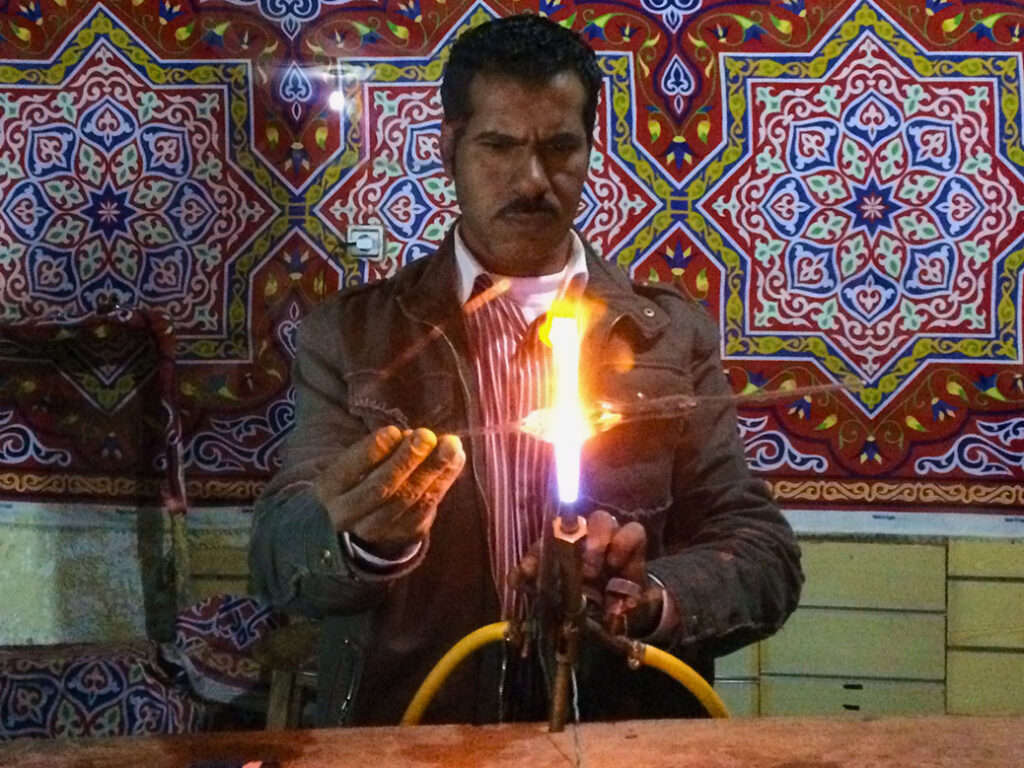
Before returning to the boat, we stopped at the Alfayed Perfume Company. Outside, a man made glass perfume bottles in real time. Inside, a choreographed sales pitch walked us through the scents and medicinal uses of various essential oils.
The shop staff offered a free massage to show off some of the oils. Through the silence of the rest of our group, we volunteered to seize the day. Viktoria was led to a seating area off to the side, while I was just ushered behind our group and asked to remove my shirt in the middle of the showroom. I paused at the awkwardness of the situation, but ultimately succumbed to the request. After the long flight, it was well worth it.
Day 2: Kom Ombo and Edfu
The phone rang at 5:45 a.m. to let us know day 2 had begun. Overnight we’d sailed 40 miles to the north, arriving outside the entrance of Kom Ombo temple. The early wake-up call allowed us to see the temple in the stunning morning light.
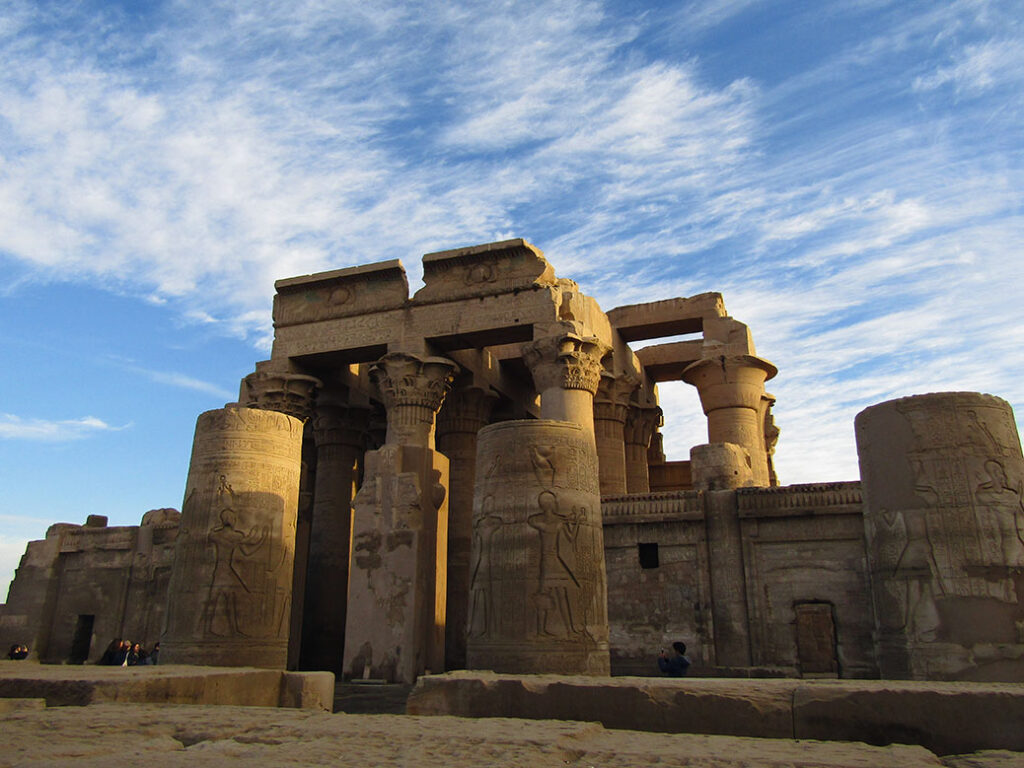
The unique temple shows off the construction techniques of ancient craftsmen. A rare “double temple,” Kom Ombo honors two gods and each side is a mirror of the other down the temple’s center axis. Levels placed on 2,000-year-old sandstone blocks show a perfect 0º plane.
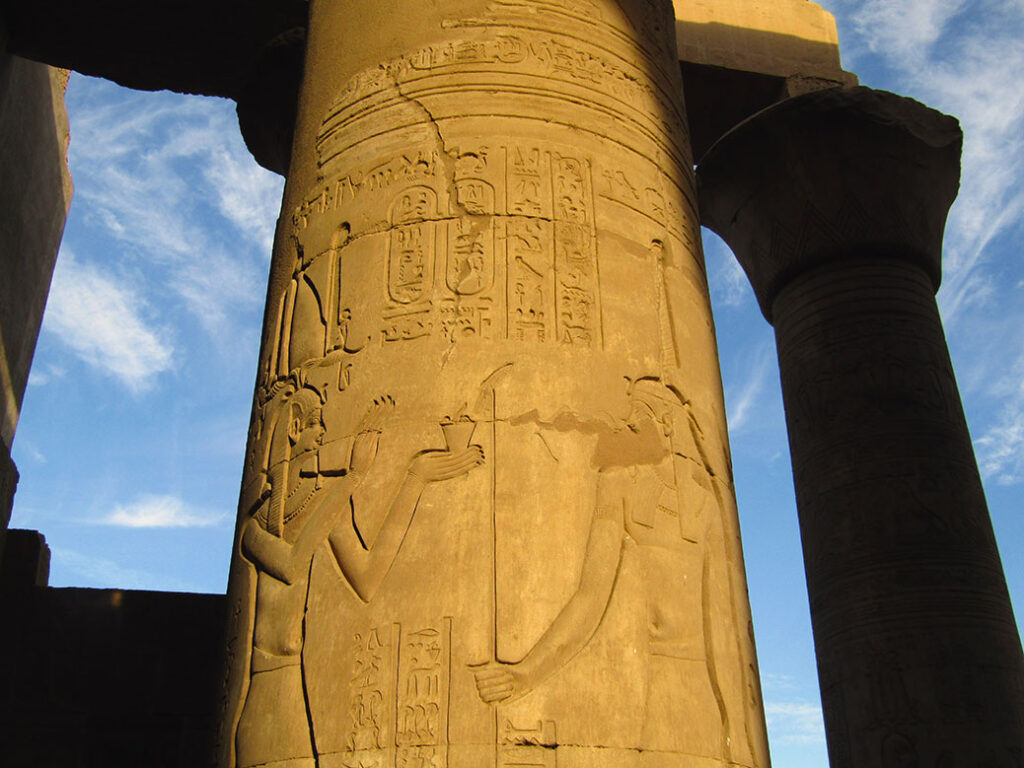
The temple’s southern structure is dedicated to the god Sobek, often depicted as a human with a crocodile head. During excavation, more than 300 mummified crocodiles were found in the area. Several are on display at the nearby Crocodile Museum.
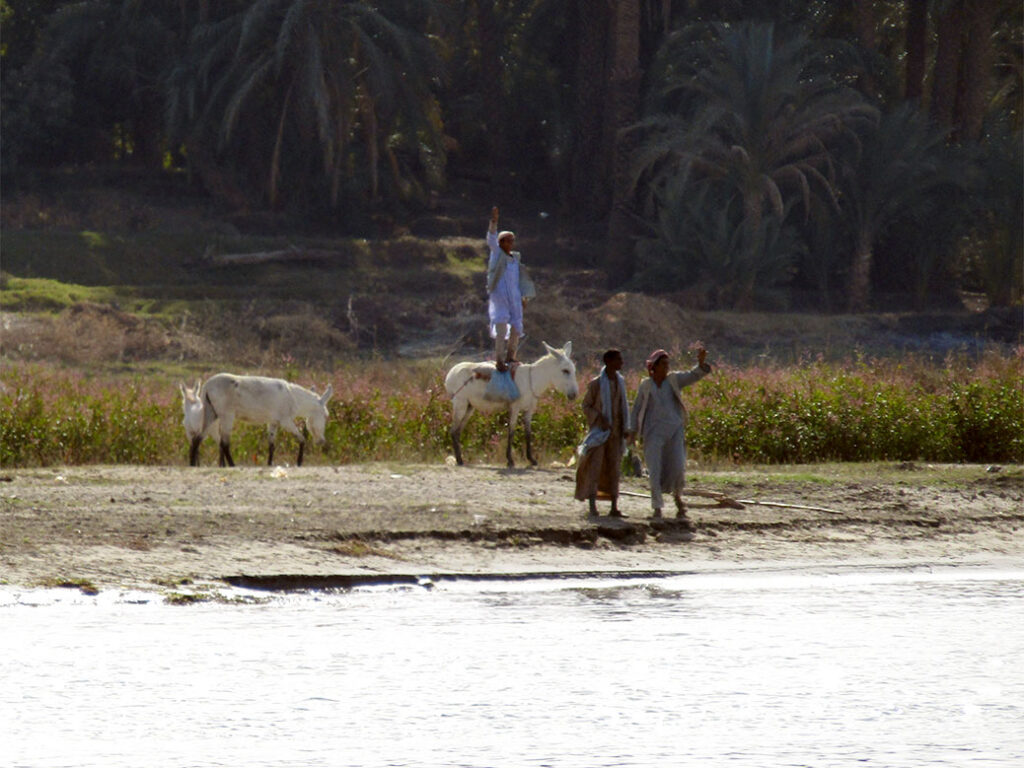
We ran the gauntlet of vendors along the river back to the boat for lunch while we sailed north to Edfu. It gave us an opportunity to watch the world as it exists on the banks of the Nile. Farmers worked the fertile and surprisingly green strip of land along the river. At one point, a man jumped atop his donkey to wave at the boat, excited by our returned greetings.
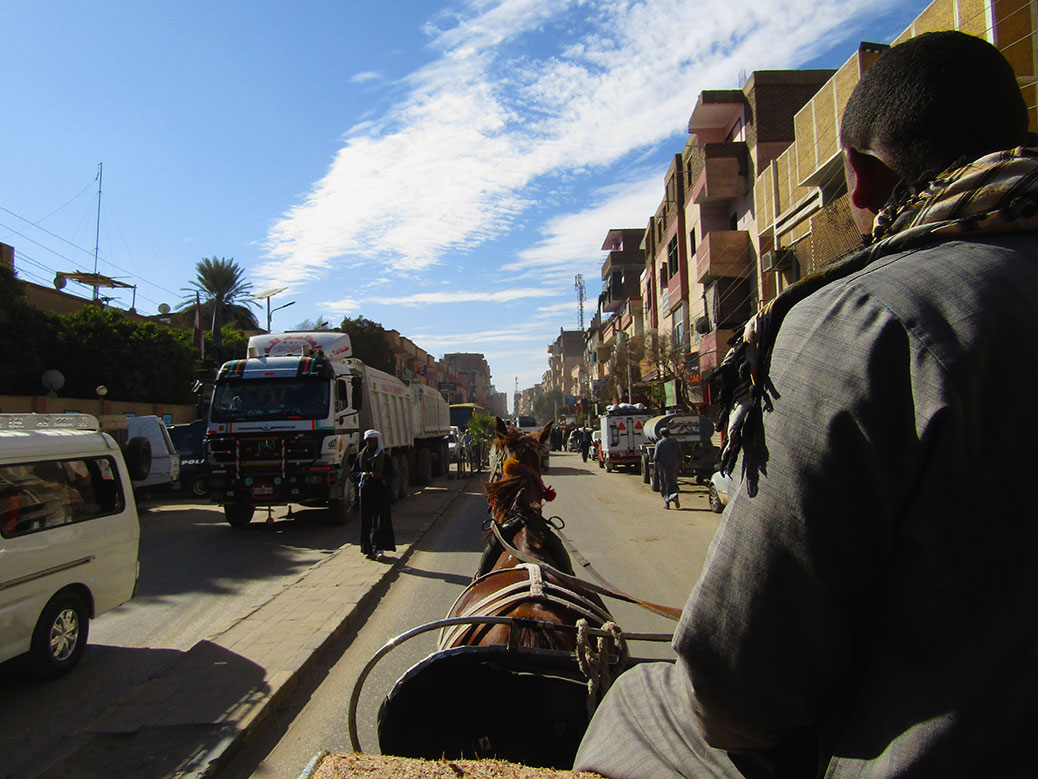
After a couple hours, we arrived on the banks of Edfu. Our guide assigned us a horse-drawn cart and we quickly set off for the Temple of Edfu. Cars and carts co-existed on the dusty city streets. Along the route, a vendor hopped into the empty seat next to our driver. He would quickly learn our names and kept an eye on us during the entirety of our temple visit with hopes we’d visit his souvenir shop. A small shouting match broke out when another vendor approached us—we’d clearly already been claimed.
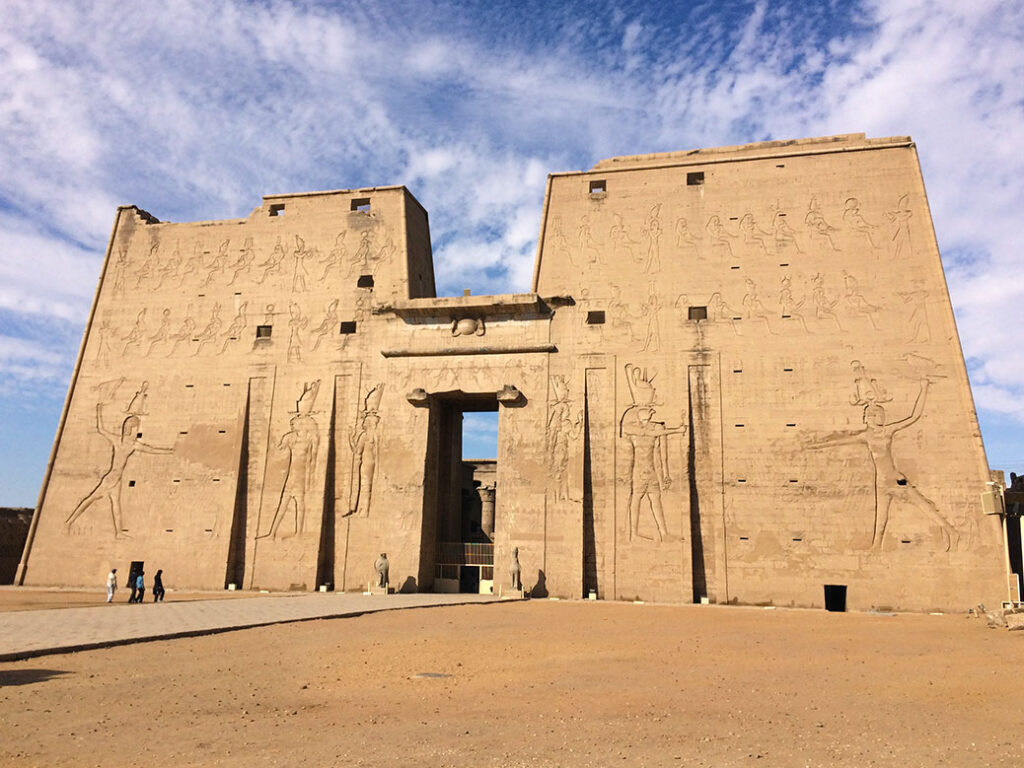
Similar in appearance to the temples at Philae and Kom Ombo, the Temple of Edfu is one of the best preserved examples of its style. Construction began around 237 B.C. and was an active site until 391 A.D. when the Roman Empire banned non-Christian religious worship. Silt from the Nile and wind-blown desert sand eventually buried the temple, providing a natural protective casing.
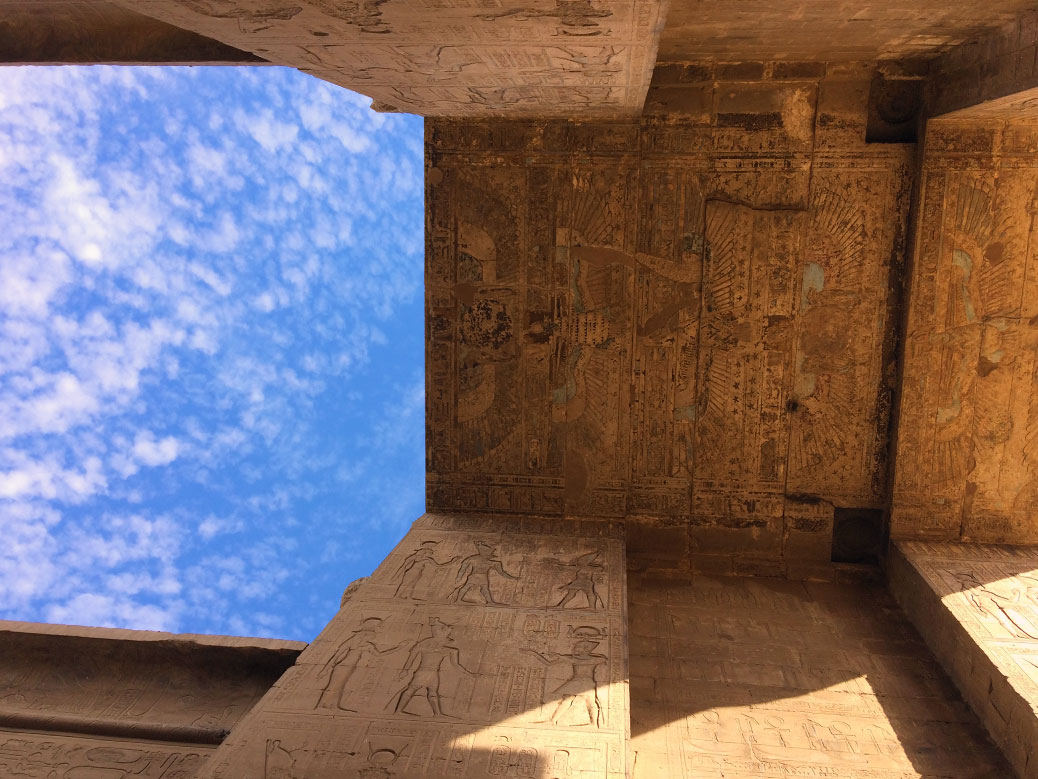
In the 1890s, French archeologists began clearing Edfu from its cocoon. Large carvings and reliefs appear as they would have 2,000 years ago, many with original color still intact. One of the more impressive carvings serves as a medical textbook, showing various tools and techniques used in ancient surgery.
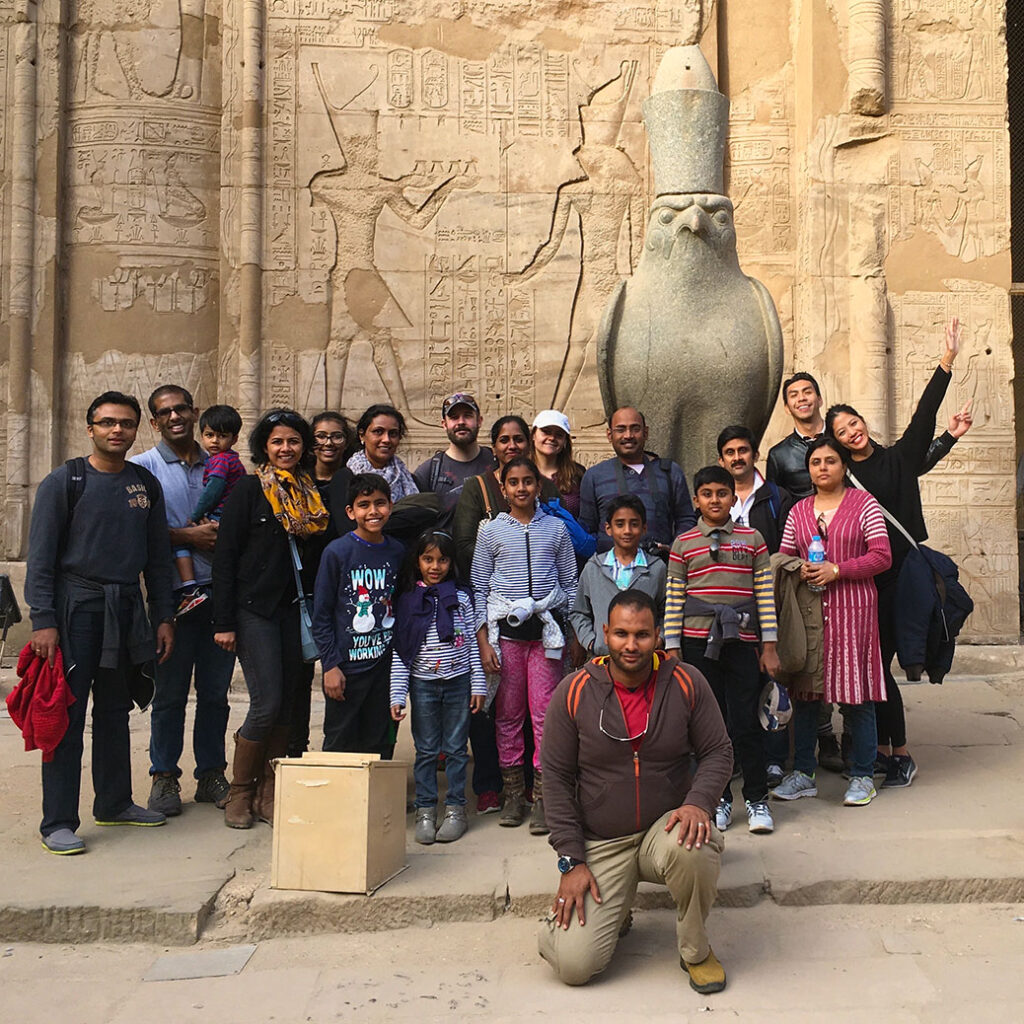
The statue of the falcon god Horus is Edfu’s biggest draw. Perched outside the entrance to the Hypostyle Hall, the perfectly-preserved statue features Horus in bird form, wearing the double crown of Upper and Lower Egypt. Our group waited patiently with the throngs of selfie-takers to get a souvenir photo.
We navigated through the vendors, kindly declining the aforementioned shopkeeper’s insistence that we take a look, and returned to the boat. Still reeling from jetlag and the early wake-up call, we headed back to our cabin for a pre-dinner nap.
The after-dusk silence was soon shattered by a man in a rowboat who pulled alongside our boat. “Hallo!!! Good evening!” he repeated, over and over and over… There would be no rest for the weary. We headed below deck for the nightly buffet-style dinner before finally passing out for good.
Day 3: Valley of the Kings
The only thing worse than the expected wake-up call is an unexpected one. Looking forward to sleeping in a little, we were shocked awake by the phone. Our guide, Mohammad, was calling to inform us that we were leaving in 10 minutes. We soon learned that the posted schedule we checked the night before was for another group.
We quickly got ready, grabbed a couple rolls from the dining room and walked out to the dock. Overnight, we’d arrived in Luxor, the ancient city of Thebes and the former capital of Upper Egypt. We boarded a ferry boat to cross to the West Bank where a bus awaited.
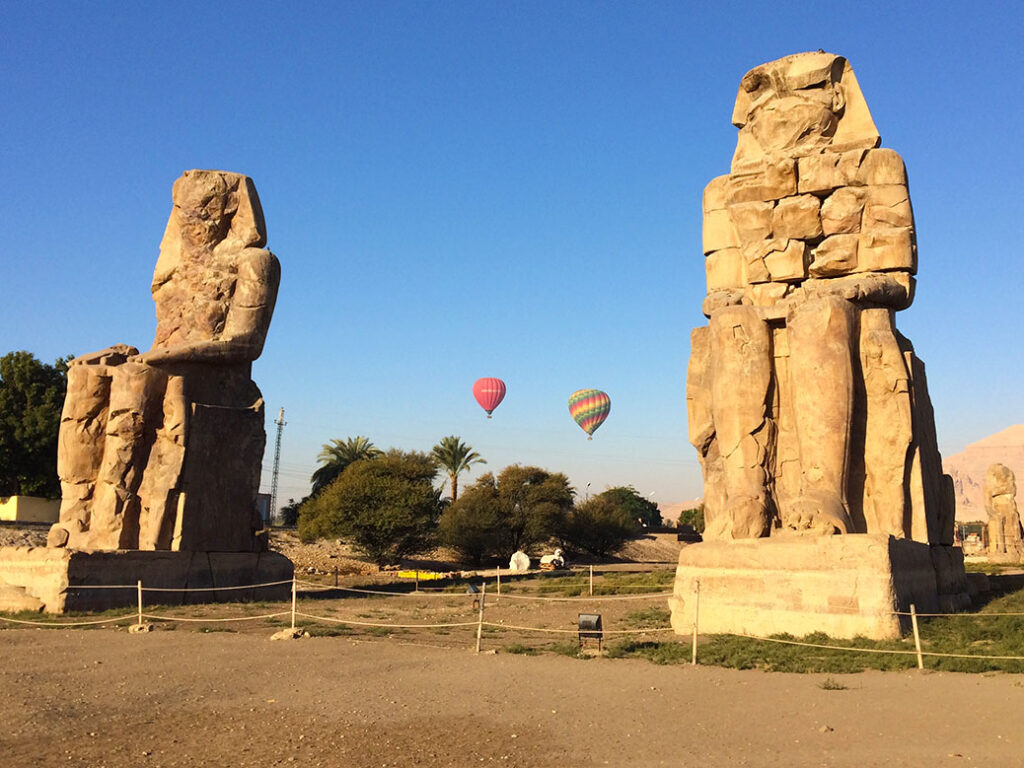
After a short drive, we arrived at the twin, 60-feet tall Colossi of Memnon statues. Modeled after Pharaoh Amenhotep III, ruler of Egypt from 1386 to 1349 B.C., the 720-ton sandstone statues look to the east, back toward the Nile River. 3,400 years of exposure to the elements have taken their toll as the details are mostly indistinguishable.
The Colossi have been a tourist destination for more than 2,000 years. Visitors spiked following a 27 B.C. earthquake that collapsed the upper half of the northern statue. In the early mornings that followed, the remaining lower-half of the statue was reported to “sing.” Hearing the song of the “Vocal Memnon” was considered lucky, luring poets, historians, politicians and even Roman emperors. Around 199 A.D., the Romans rebuilt the upper portion of the statue, putting an end to the song of Memnon.
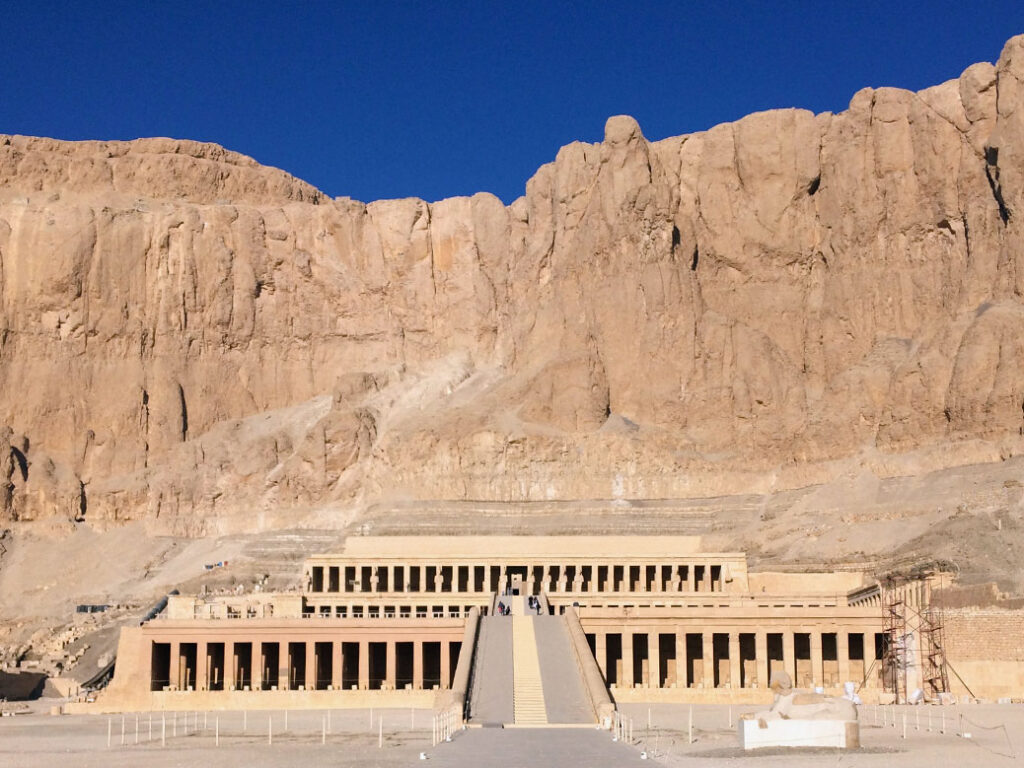
We continued up the highway to the Mortuary Temple of Hatshepsut. A unique blend of Egyptian and Greek Classical architecture, the temple serves as a memorial to Pharaoh Hatshepsut, Egypt’s second female pharaoh.
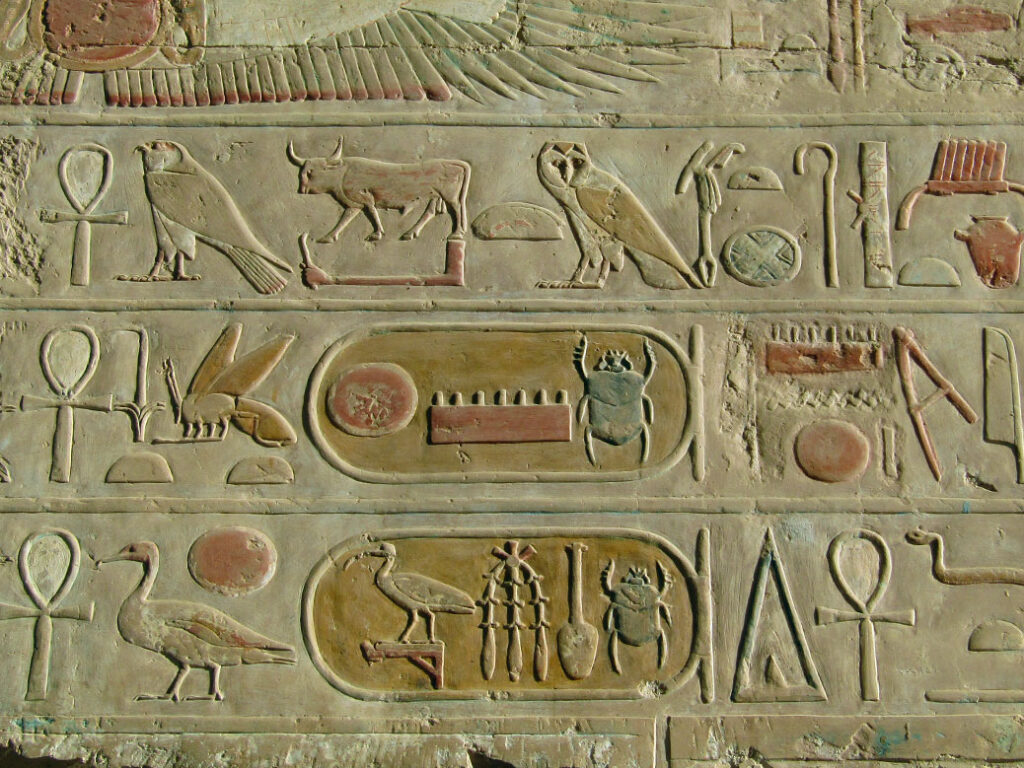
Significant restoration work by Polish teams has restored the temple to near-original condition. Hieroglyphics clearly tell the story of Hatshepsut’s birth and rise to power. Her reign from 1478–1458 B.C. is considered one of the most successful in Egyptian history. She established trade with modern-day Ethiopia and Sudan and commissioned hundreds of construction projects, including the unfinished obelisk in Aswan and many structures in the Temple of Karnak.
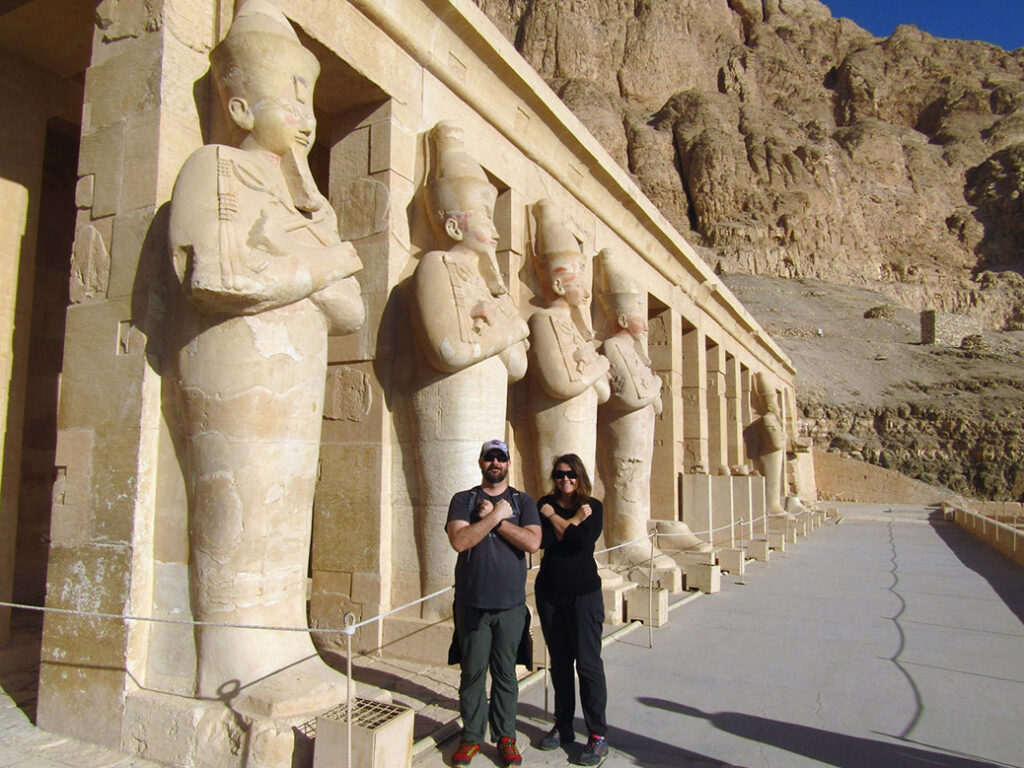
As with most sites, Hatshepsut’s temple is crawling with vendors and “guides” looking to make easy money. One man swapped his turban for my Chicago Cubs cap, then posed with me for a “crossed arms” photo reflective of the statues outside the temple’s main hall. Even after I slipped him a couple pounds, he continued to show us places for unique photos and pointed out hidden carvings.
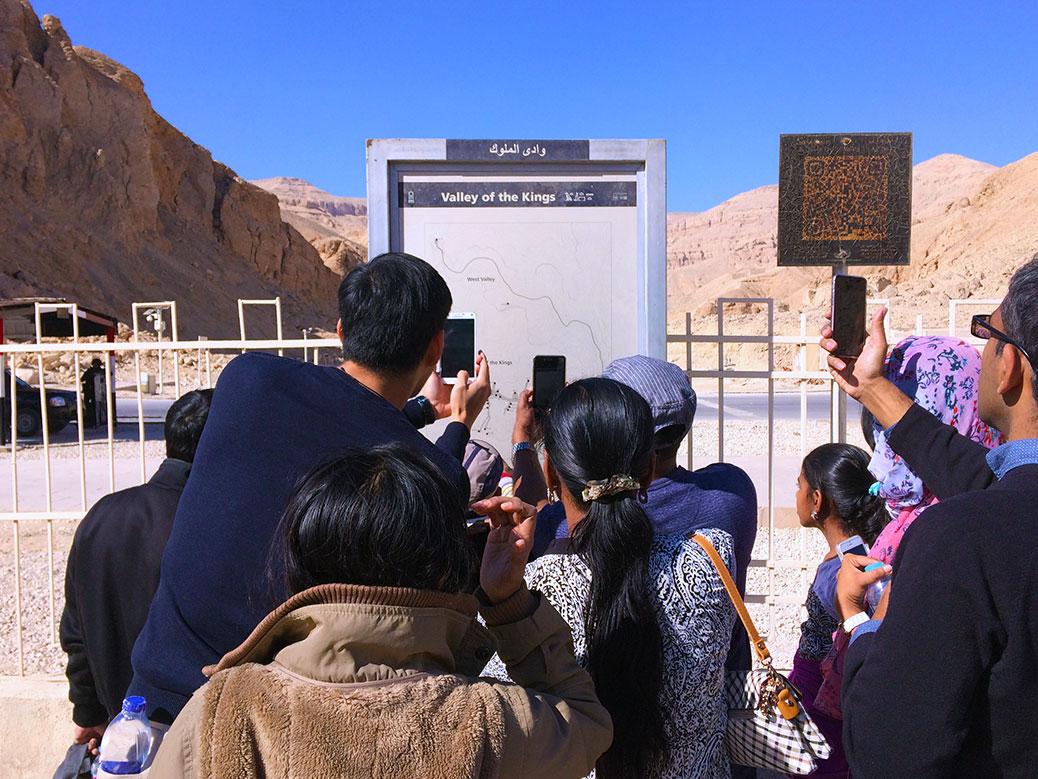
After a short coffee break, we boarded the bus and continued up the road to the celebrated Valley of the Kings. From 1539-1075 B.C., more than 60 Egyptian pharaohs and nobles were enshrined in sandstone tombs dug deep into the base of al-Qurn, the highest peak of the Theban Hills.
We started in the tomb of Ramesses IV. The second tomb discovered in the valley, it’s notable for graffiti from tourists who have visited over several centuries. More than 650 drawings and inscriptions from ancient Greek and Roman visitors have been found as well as 50-plus examples left by Coptic monks who once lived in the tombs.
We also visited the tombs of Ramesses IX and Merneptah, but the clear highlight is the tomb known simply as KV62—the final resting place of Tutankhamun. The source of much of the mystery around ancient Egypt, the tomb was hidden under a workers village and left undiscovered until 1922. Inside, the completely intact tomb contained 5,398 items Tut would need in the afterlife.
Today all of the artifacts are in various museums, including the golden funerary mask. Considered one of the world’s great works of art, the mask can currently be seen in Cairo’s Museum of Egyptian Antiquities along with several other items from the tomb.
However, the most important artifact—Tut himself—is still in the tomb. Preserved in a climate-controlled glass case, you can see Egypt’s most famous pharaoh up close and personal. Due to concerns about preservation, Tut’s tomb will eventually be closed to visitors. However, a perfect replica is currently under construction nearby that will allow visitors to touch and observe the tomb in detail previously unavailable to the public.
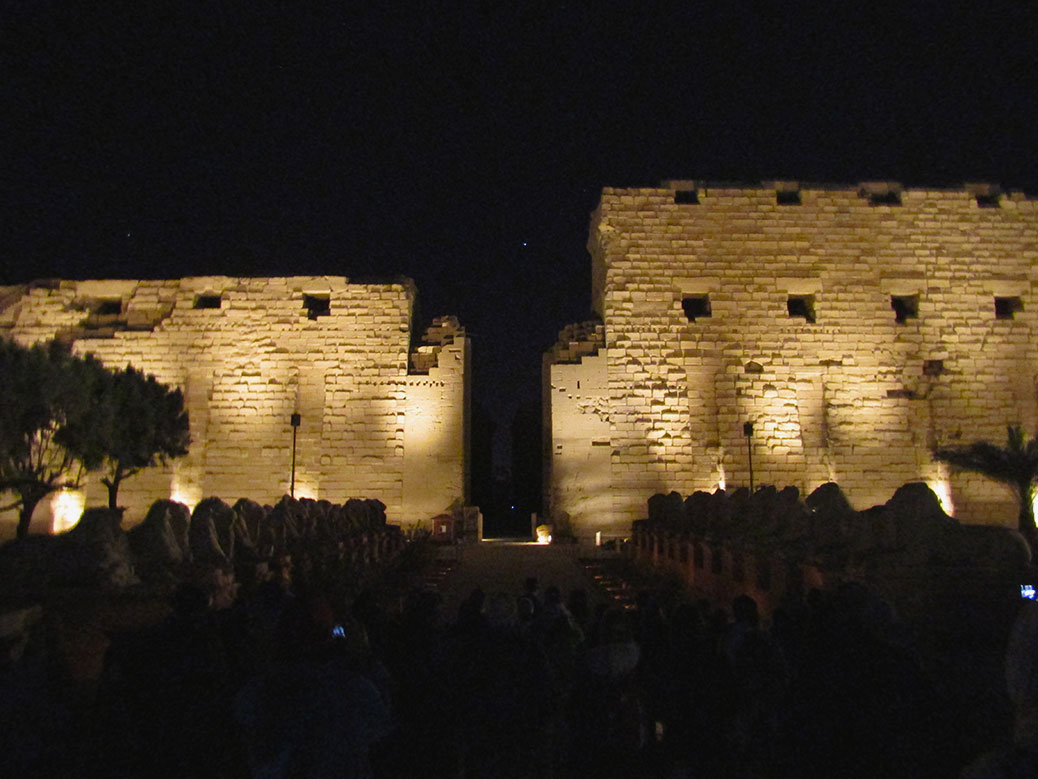
That evening, we joined a side excursion to Karnak Temple for the Sound and Light show. Many of ancient Egypt’s most popular sights have added projection and audio systems as a way of extending opportunities for tourist dollars. The walking tour tells the story of the temple in dramatic detail.
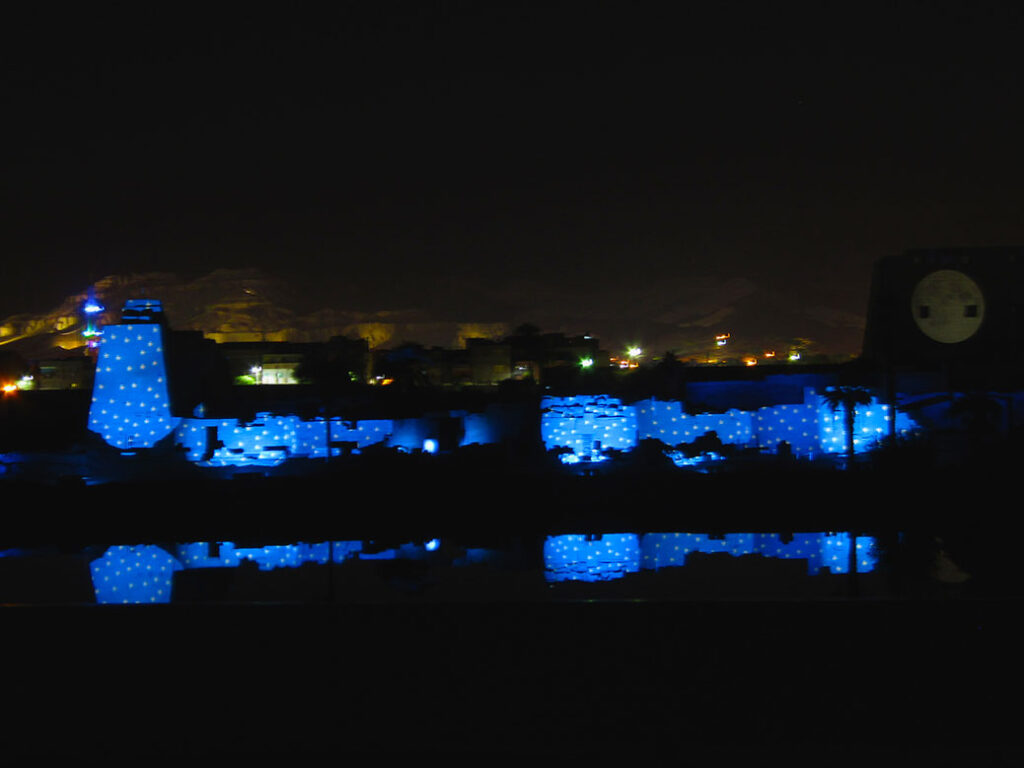
After passing through the various pylons and Hypostyle Hall, we arrived at a set of bleachers near the Sacred Lake. The story of Karnak and the city of Thebes is projected onto the monument opposite the lake, the light reflecting on the water’s surface. While obviously designed as a tourist experience, it’s a unique way to visit the sprawling, ancient site.
Day 4: Karnak Temple Complex
The last day of our Nile River cruise finally offered an opportunity for a slow start to the day. The various tour groups began to disband as we enjoyed a leisurely breakfast. We joined the Mutha family—two doctors and their children from India—for some final sightseeing.
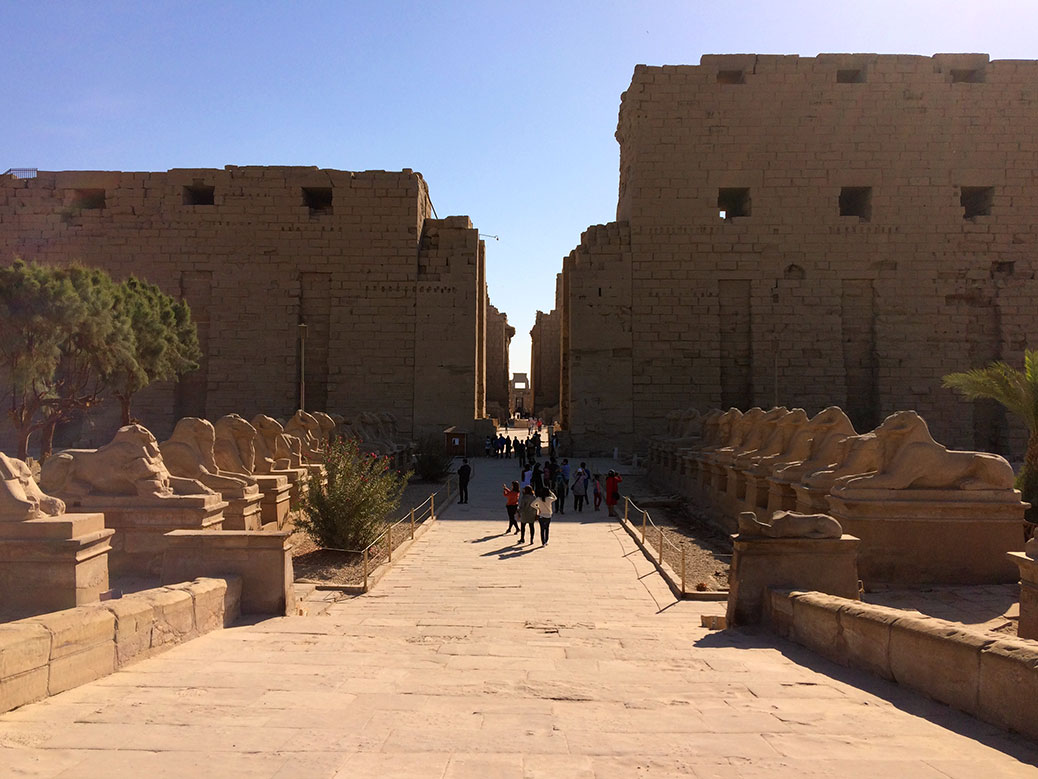
Karnak Temple during the daytime allows the morning sun to highlight the colors and architecture of ancient Thebes. The second-largest religious site in the world after Cambodia’s Angkor Wat complex was a fitting final-day destination. While the architecture itself wasn’t unique to anything we’d seen before, the size and scale is one-of-a-kind.
From the 134 columns of the 50,000 sq. ft. Hypostyle Hall to the 70-ton beams balanced atop the columns, Karnak is a marvel of ancient construction. Built under the watch of 30 pharaohs over hundreds of years, it’s a monument to both the rise and fall of ancient Egypt. As a result, Karnak is the most visited tourist site in Egypt after the Pyramids of Giza.
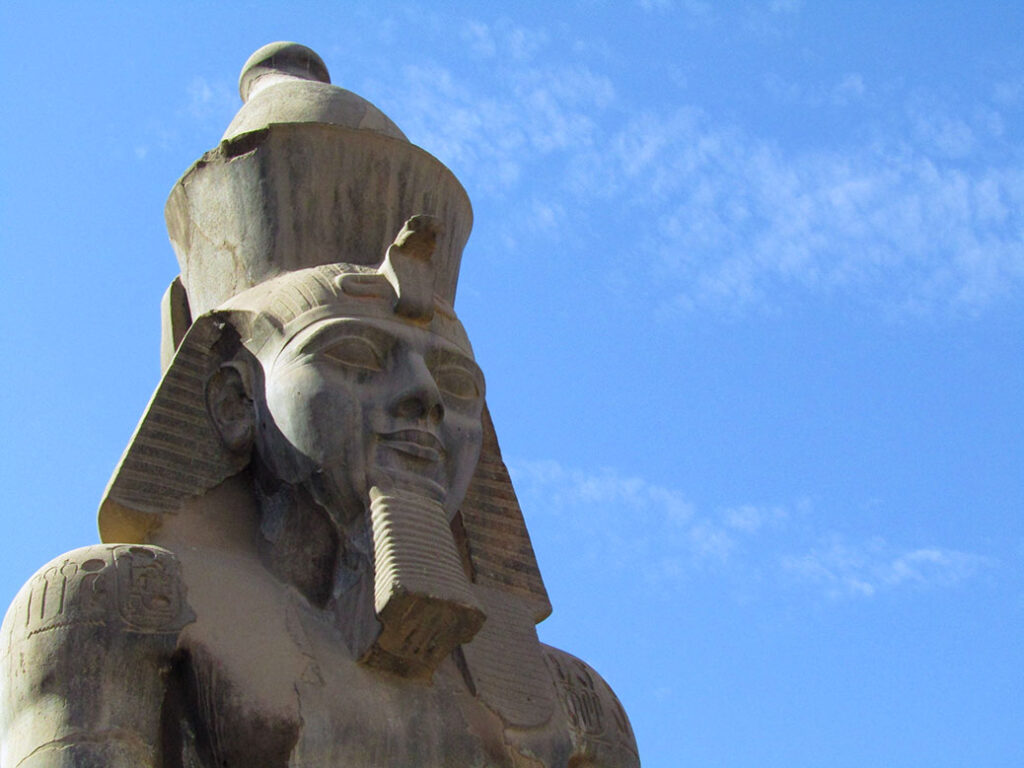
We finished our tour at Luxor Temple, believed to be the coronation site of the kings of ancient Egypt. Architecturally, Luxor follows the same model as the other temples of Upper Egypt, but with a few unique surprises. At the temple’s entrance, two giant statues of Rameses II guard the doorway.

Further inside, typical hieroglyphics and relief carvings decorate the walls. But hidden away atop a wall in a shadowy corner, a different decoration is barely visible. A Roman fresco-style painting can still be seen from the era when Luxor Temple was used as a fortress for the invading Roman Empire.

After a few days of “cruise food,” the opportunity to try some of the local cuisine called our names. We turned down our tour guide’s recommendation of McDonald’s, instead opting for Abu Gad. Climbing the stairs of the multi-story restaurant to the rooftop dining room, we could hear the hustle and bustle of modern-day Luxor. We sampled several specialties, including an okra-like soup called molokhia and a potato and okra tagine cooked in the traditional clay pot.
If You Go
Memphis Tours Steigenberger Minerva Nile Cruise
Four-day Nile River cruise from Aswan to Luxor visiting the Philae Temple, Edfu, Valley of the Kings, Luxor and more. Meals included on board.
Abu Gad Restaurant
Typical Egyptian meals, sandwiches, pasta and more. Luxor City near Luxor Temple.

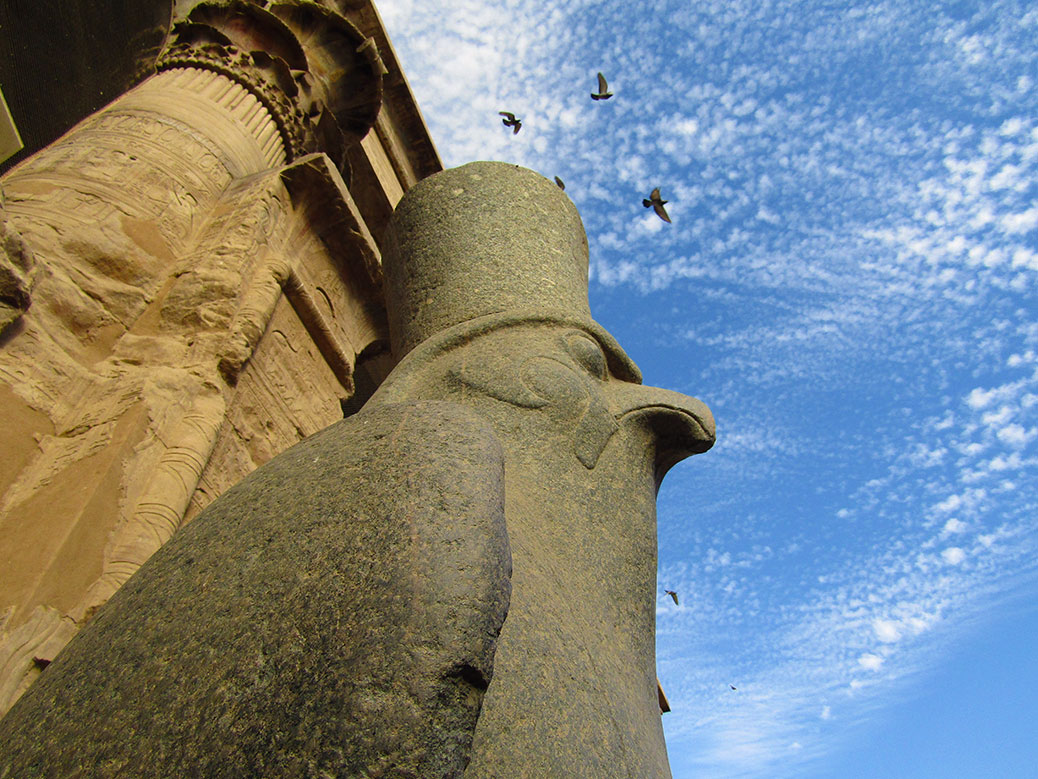
1 thought on “Nile River Cruise and the Temples of Upper Egypt”